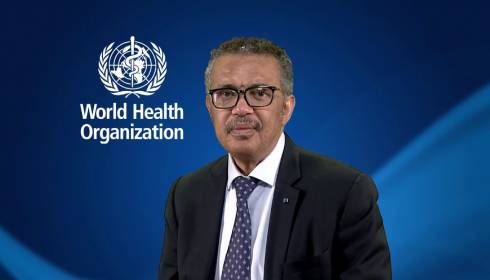
COVID may have caused 2.7 times more deaths than actually reported: WHO
Rajeev Choudhury
Full death toll associated directly or indirectly with the COVID19 pandemic could be as high as 2.7 times than 5.4 million deaths reported till December 31, 2021, new estimates released by the World Health Organisation show.
The estimates released by the UN health agency on May 5, 2022, reveal that excess mortality between 1 January 2020 and 31 December 2021 was approximately 14.9 million (range 13.3 million to 16.6 million).
“These sobering data not only point to the impact of the pandemic but also to the need for all countries to invest in more resilient health systems that can sustain essential health services during crises, including stronger health information systems,” WHO Director-General Dr Tedros Adhanom Ghebreyesus, said.
“WHO is committed to working with all countries to strengthen their health information systems to generate better data for better decisions and better outcomes,” he added.
Excess mortality is calculated as the difference between the number of deaths that have occurred and the number that would be expected in the absence of the pandemic based on data from earlier years.
The data released by the WHO show that 84% of the excess deaths have occurred in in South-East Asia, Europe, and the Americas, while just 10 conutries accounted for 68% of the excess deaths globally.
While middle-income countries account for 81% of the 14.9 million excess deaths (53% in lower-middle-income countries and 28% in upper-middle-income countries) over the 24-month period, with high-income and low-income countries each accounting for 15% and 4%, respectively, the UN health agency said.
“Measurement of excess mortality is an essential component to understand the impact of the pandemic. Shifts in mortality trends provide decision-makers information to guide policies to reduce mortality and effectively prevent future crises,” Dr Samira Asma, Assistant Director-General for Data, Analytics and Delivery at WHO said.
However, she added that limited investments in data systems in many countries do not allow the true extent of excess mortality to emerge.
“These new estimates use the best available data and have been produced using a robust methodology and a completely transparent approach,” Dr Samira further added
“Data is the foundation of our work every day to promote health, keep the world safe, and serve the vulnerable. We know where the data gaps are, and we must collectively intensify our support to countries so that every country has the capability to track outbreaks in real-time, ensure delivery of essential health services, and safeguard population health,” said Dr Ibrahima Socé Fall, Assistant Director-General for Emergency Response.
Meanwhile, India has strongly objected to the estimates pertaining to the country, which were published by the WHO.
In a statement, the union health ministry said that WHO has released the excess mortality estimates without adequately addressing India’s concerns about the methodology adopted by WHO to project excess mortality estimates based on mathematical models.
Stating that India’s Civil Registration System (CRS) is extremely robust, the ministry said that in view of the availability of authentic data published through the system, a mathematical model should not be used for projecting excess mortality.
The UN health agency said that it is examining the data released by the CRS for the year 2020, which was released on May 2, 2022, and will consider them in future revisions of the estimates.
It may be noted that the current estimates of the WHO put India’s excess death at over 4.7 million, against 523,975 reported in the country.